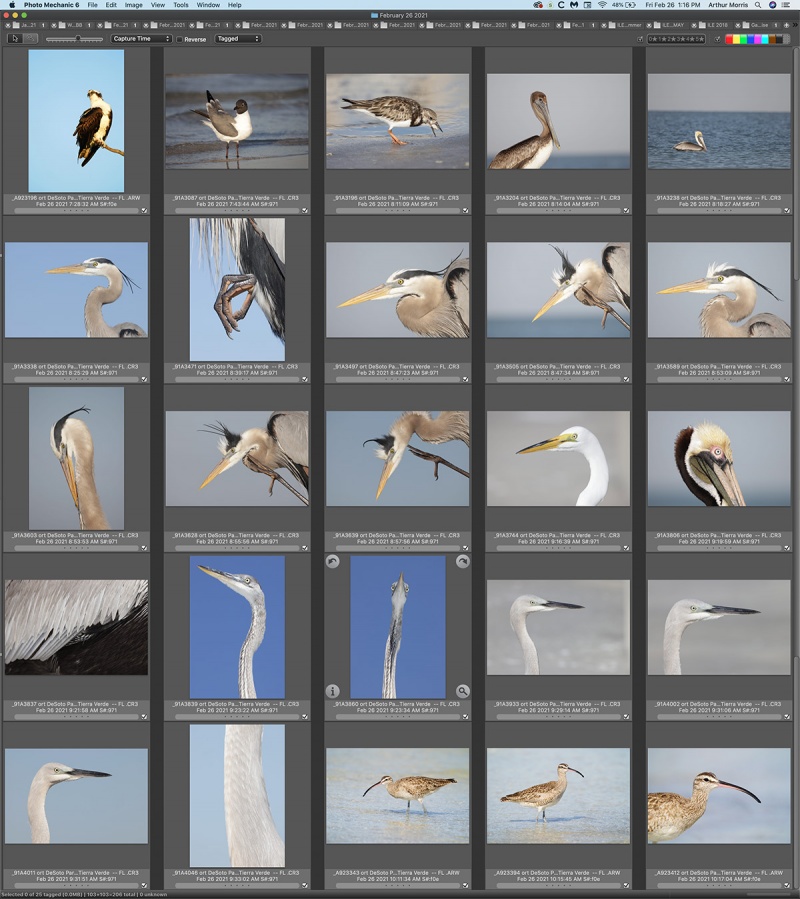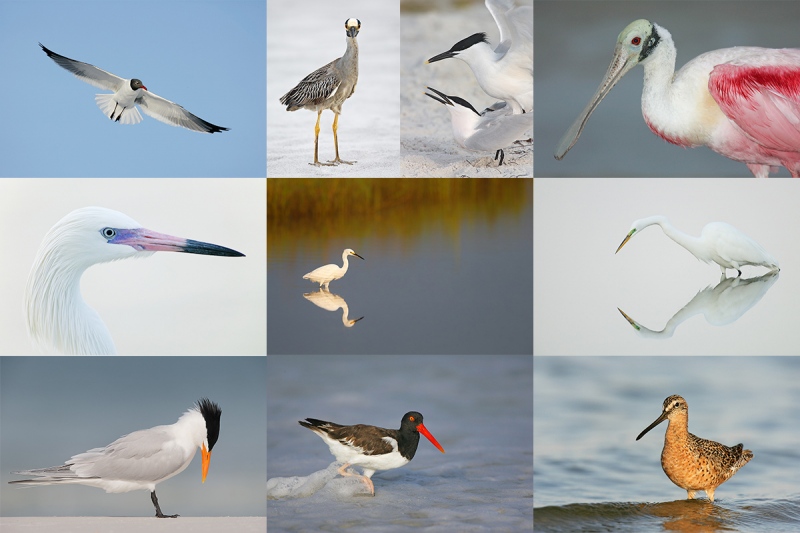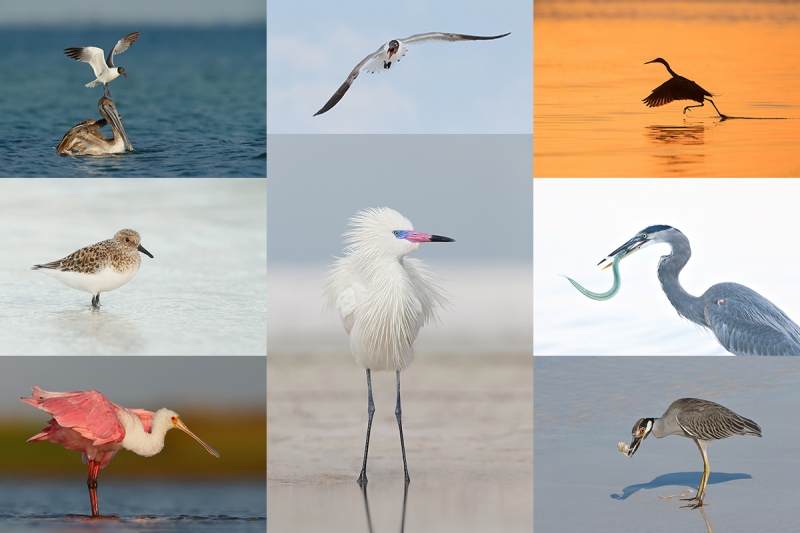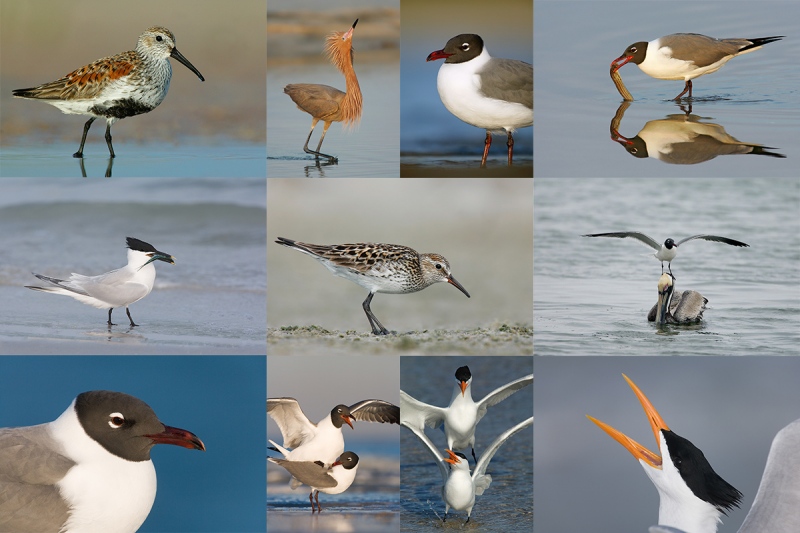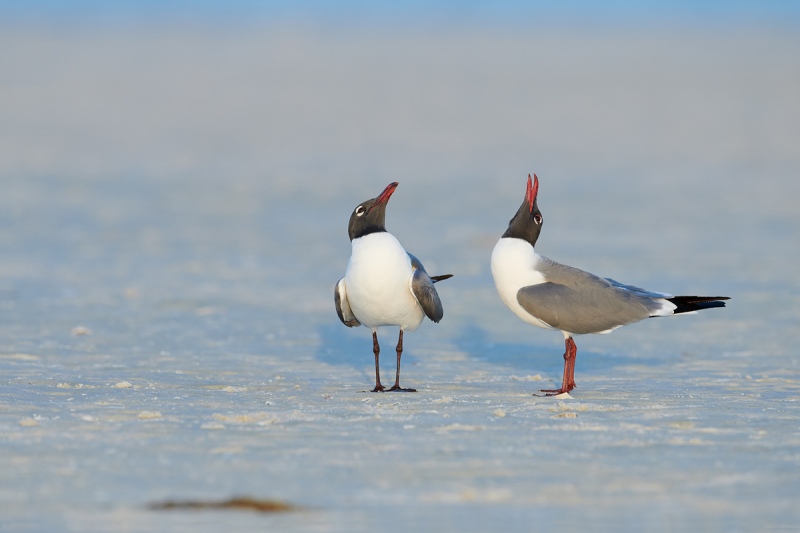What’s Up?
Me, early, on the way to Fort DeSoto on Friday morning for a busman’s holiday.
Photography on Thursday morning at ILE was fair. I did some of the larger crane chicks. They act as if I do not exist. They were hanging in a spot where the grass was too high. I did some Cattle Egret flight from the car, got one good one, and continued to learn about R5 AF.
Speaking of the R5, I am pretty much finished with the guide, but for the gallery and the section on MY MENU. I will be sending out a few review copies very soon and should have the guide available in the store by the end of next week the latest.
The forecast for Thursday night is looking very good: clear with northeast winds. I will be heading down at about 6pm and hope to be sound asleep by 7pm so that I am well rested for the drive to Fort DeSoto.
The weekend weather for DeSoto is still looking excellent. If you would like to join me for one or more inexpensive In-the-Field Instructional sessions, please contact me ASAP via e-mail or try me on my cell at 863-221-2372. Saturday morning is looking perfect.
I was glad to learn that Morris Herstein sold his Venus Optics Laowa 15mm f/4 Macro Lens for Canon EF within hours of it being listed on Thursday.
Today is Friday 26 February and I hope that you have a great day wherever you are.
This blog post took less than an hour to prepare and makes sixty-eight days in a row with a new one. Please remember …
Please Remember
With income from IPTs now at zero, please, if you enjoy and learn from the blog, remember to use one of my two affiliate programs when purchasing new gear. Doing so just might make it possible for me to avoid having to try to get a job as a Walmart greeter and will not cost you a single penny more. And if you use Bedfords and remember to enter the BIRDSASART code at checkout, you will save 3% on every order and enjoy free second-day air shipping. In these crazy times — I am out at least forty to sixty thousand dollars so far due to COVID 19 (with lots more to come) — remembering to use my B&H link or to shop at Bedfords will help me out a ton and be greatly appreciated. Overseas folks who cannot order from the US because of import fees, duties, and taxes, are invited to help out by clicking here to leave a blog thank you gift if they see fit.
Wanted to Buy
If you have a Canon EF 100-400mm f/4.5-5.6L IS II USM lens that you would like to part with, please contact me via e-mail. I now have two interested buyers.
|
|
|
All of the images were created at Fort DeSoto in April or early May. Click on the card to enjoy a larger version.
Fort DeSotoIPT card A
|
Fort DeSoto Spring IPT #1
Fort DeSoto Spring IPT #1. 3 1/2 DAYS. SAT 10 APR thru the morning session on TEUS 13 APR 2021. $1499 includes three lunches. Limit: 6. Openings 5.
While DeSoto is one of the rare photo hotspots with the potential to be great any day of the year, it absolutely shines in spring. Many of the wading birds and shorebirds are in full breeding plumage. The terns and gulls are courting and copulating. We will have lots of flight photography opportunities. Did I mention that many of the birds are silly tame?
A $499 deposit is required to hold your spot for this IPT. You can send a check (made out to “BIRDS AS ART) to us here: BIRDS AS ART, PO Box 7245, Indian Lake Estates, FL, 3385, or call Jim or Jennifer at the office with a credit card at 863-692-0906. Your balance, payable only by check, is due immediately after you sign up. If you have any questions, please feel free to contact me via e-mail. If you cancel due to COVID 19 concerns, all of your payments will be refunded.
|
|
|
All of the images were created at Fort DeSoto in April or early May. Click on the card to enjoy a larger version.
Fort DeSoto IPT card B
|
Fort DeSoto Spring IPT #2
Fort DeSoto Spring IPT #2. 3 1/2 DAYS. MON 26 APR thru the morning session on THURS 29 APR 2021. $1499 includes three lunches. Limit: 6.
Not only am I conversant in all three major camera systems used in the US — Nikon, Canon, and SONY (sorry Andy Rouse …), I have used all three within the past four years. Those include both SONY and Canon mirrorless. On both of these IPTs you will learn how to get the best exposure, how to get the most out of your AF system, and how to get close to free and wild birds. And tons more.
A $499 deposit is required to hold your spot for this IPT. You can send a check (made out to “BIRDS AS ART) to us here: BIRDS AS ART, PO Box 7245, Indian Lake Estates, FL, 3385, or call Jim or Jennifer at the office with a credit card at 863-692-0906. Your balance, payable only by check, is due immediately after you sign up. If you have any questions, please feel free to contact me via e-mail. If you cancel due to COVID 19 concerns, all of your payments will be refunded.
|
|
|
All of the images were created at Fort DeSoto in April or early May. Click on the card to enjoy a larger version.
Fort DeSoto IPT card C
|
Fort DeSoto Spring IPTs Expected Species
With any luck, we should get to photograph the following species: Laughing, Ring-billed, Herring, and Lesser Black-backed Gull; Royal, Sandwich, and Forster’s Tern: Great, Snowy, and white and dark morph Reddish Egret and Great Blue, Little Blue, and Tricolored Heron; Yellow-crowned Night-Heron, Wood Stork, Roseate Spoonbill, and Brown Pelican. We will see and photograph lots of shorebirds including American Oystercatcher, Black-bellied, Wilson’s, Semipalmated, Snowy, and Piping Plover, Marbled Godwit, Willet, Dunlin, Red Knot, Sanderling, and Western and possibly White-rumped Sandpiper.
Sign up for both IPTs and enjoy a $200 discount. Most of us will be staying in nearby Gulfport.
Image Perspective Question
In a recent Fort DeSoto in Spring! Announcing Two DeSoto IPTs. New and Selected Used Gear Listings. The Under-Appreciated Laughing Gull. And an Image Perspective Question blog post here, I asked, with regards to the image above: Why would today’s featured image have been twenty times better if I had gotten down on my belly?
Kudos to Jeff Walters, the only one to take a stab at the question when he left this comment:
You would get more blue sky in the background had you gotten on your belly and may have eliminated the dark spot in the foreground.
His answer was correct in part (there is no sky in the image), but he missed the two most important reasons:
#1 (by far). Had I gotten down on my belly all of the butt-ugly detail and texture in the sand would have disappeared; gone, goodbye, forget it. Imagine that you are looking down at a patterned tablecloth. You would see the entire pattern. Yes the foreground and distant background would have been nicely out-of-focus, but you would still have seen the pattern. Now imagine that you kneel down so that your eyes are at table-top level? Would you see a shred of the pattern? No, not at all.
#2: Being down at the level of the birds, the image would have had a much more intimate feel to it, as if you were part of their world,
#3: Note: the blue strip at the top of the image was actually the Gulf, not the sky. So had I gotten wet and sandy, we would have had a lot more of the blue Gulf water along with some probably grey sky. But again, all of the ugly detail in the sand would have been gone.
I plan on getting down and dirty whenever possible at DeSoto.
Typos
In all blog posts and Bulletins, feel free to e-mail or to leave a comment regarding any typos or errors.

